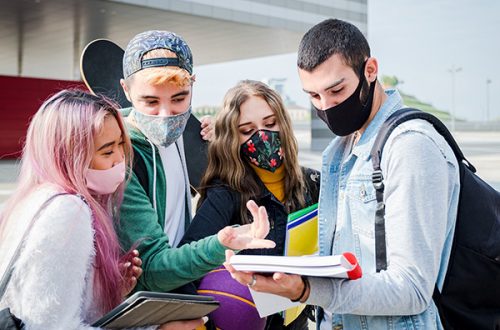Brushing, Fluoride, and All the Fun Stuff:
Healthy Smiles September 2018

By Dr. Megan

For little babies, basically after every time milk is consumed a clean and wet cloth may be used to wipe the gums. So what is exactly achieved here? Well, it is not always about teeth. We would like to eliminate any residual milk left on the gum tissue, hence eliminating a “pleasant” habitat in which cavity causing bacteria can thrive.
Occasionally parents are concerned that their ritual of cleaning baby’s mouth might wake them up after all the effort of putting them to sleep. Think of this way: milk contains sugar and is capable of causing cavities and decay. Would you like an older child to go to sleep while his/her gums are covered with crumbles of brownies? Spending half a minute to a minute gently cleaning the gums and teeth after your baby drinks milk would not only save them from harm but would save you time and money down the road.
You may buy your baby’s first soft toothbrush once the first baby teeth, usually front bottom teeth, are in. Some of you might have seen dentists using a technique called “knee- to-knee” where one person holds the baby’s hands while the baby’s legs are straddled around the other person’s waist. A good one to two minutes of brushing with a soft toothbrush plus a smear layer of toothpaste followed by a wet wipe is good enough. Children’s level of cooperation improves significantly each year. You are not the cruelest parent for gently holding your baby’s head and limbs to brush their teeth for one minute.
What Kind of Toothpaste to Use
Almost on a daily basis, I’m asked what toothpaste is best. I will make it very simple for you. There are basically two types of toothpastes, those containing fluoride and those without. Taste and flavor is really up to your child. Although the American Academy of Pediatric Dentistry has never advised a cutoff age for the use of fluoride and even encourages a fluoride-containing toothpaste to be used once the first teeth erupt, I am a little more easy-going and let parents decide up to 12-18 months of age on when they would like to initiate the use of fluoride.
A significant number of infants are prescribed oral fluoride by pediatricians in our area, which is OK. However, beyond 12-18 months of age, I would stop prescription fluoride and switch to topical fluoride to protect the enamel.
Fluoride use has become a subject of controversy. I always share a personal story when parents ask me about it. I used to go to a nutritionist to learn and adapt healthy diet habits, and although I was not a big fan of dairy products, I was banned from dairy to experiment with how my body responded. I was very happy with the experience and got hooked on almond and coconut milk with no regret. The good news is we DO have alternatives for certain “controversial” items in the world of today such as dairy and gluten. However, as of this day, we have not yet discovered an alternative for fluoride. I might add that even if we do, there will be a group attacking that alternative as well.
At the end of the day, it is about balancing risks. Do we have scientific proof against fluoride’s safe use? Definitely not. Do I want to be extremely “safe” and take the no-fluoride route, and end up with my child having decay on half of their teeth? I would rather not. Occasionally, I encounter a family that prefers no fluoride use and after I perform my exam, I would have to sadly let the parent know that the child needs a root canal therapy on one of the adult molars, silently cringing. One of the worst moments for a pediatric dentist is to see large decay so early in those permanent molars. Spend time with your child’s dentist to review all your concerns and questions.
How Much Toothpaste
I am going to give you the wrong answer first: you should never cover all of the toothbrush bristles with toothpaste, even for yourself. It is really not needed. For a child less than 3 years old, use a “rice-size” amount of tooth paste which is basically a smear. For a child older than 3, you may use a “pea-size” amount of toothpaste (this includes yourself too!). For the little babies, always have a clean and wet cloth/gauze ready to wipe after.
Dr. Mojdeh Faraz, aka Dr. Megan, is a Board-certified pediatric dentist at Pajaro Valley Children’s Dental Group. She received her DDS at NYU followed by specialty training at Jacobi Medical Center in affiliation with Albert Einstein School of Medicine. “My passion in working with children and to be part of their innocent world,” she says. Send your questions for Healthy Smiles to [email protected]








